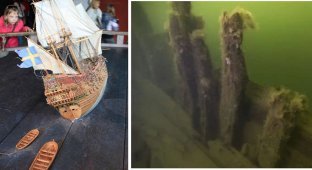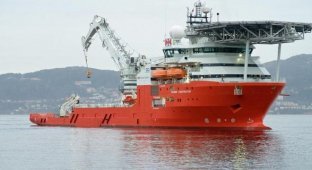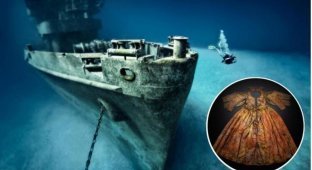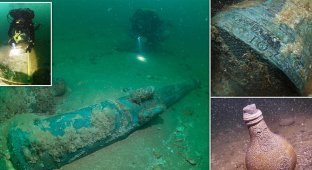Researchers filmed a 350-year-old ship that sank with the king on board (16 photos + 1 video)
The surveys made by the researchers showed the wreckage of the royal warship "Gloucester", which sank 40 kilometers from Great Yarmouth in 1682 with the future King James II on board. James Stuart, later James II of England, survived the sinking, but about 250 sailors and the passengers died. The remains of Gloucester were discovered back in 2007, but the opportunity to consider them up close appeared only now. 
Discovery of the royal ship "Gloucester" researchers considered the largest marine discovery since the 1970s "Mary Rose" discovered. Only 16 years after the discovery of the vessel managed to photograph its wreckage close up.
The ship sank on May 6, 1682 after hitting the sandy shoals of Norfolk in the southern part of the North Sea. At the time of the disaster on board was the future king of England and Scotland, James Stewart, then the Duke of York, who survived - unlike the 250 crew and passengers. 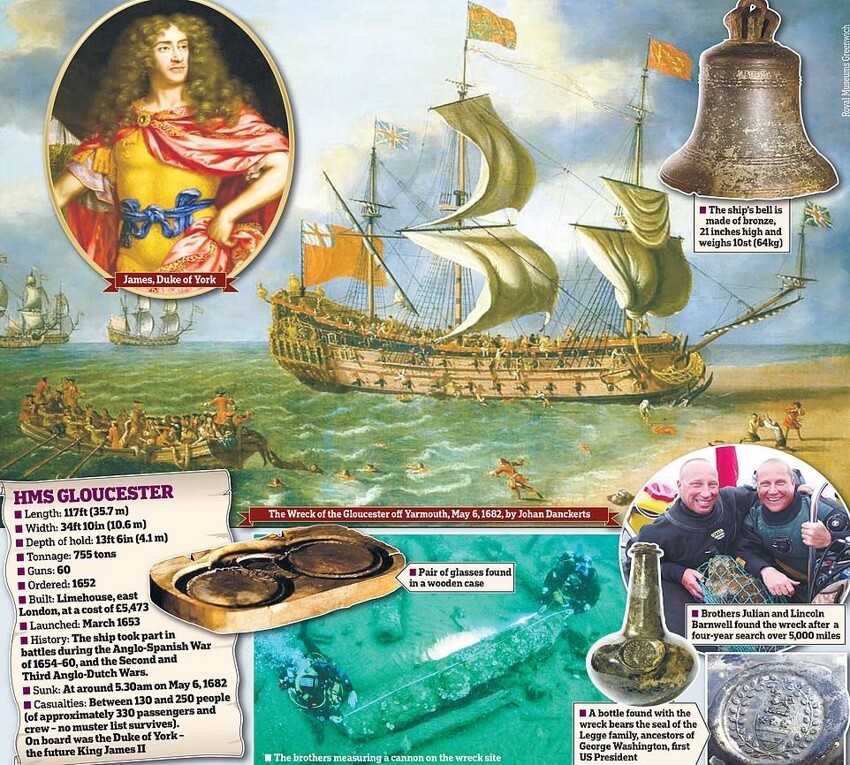
The remains of the royal ship were discovered in 2007, about 40 kilometers from the coast of Great Yarmouth, half buried under a layer of bottom sediments. However, only in 2022 the discovery was announced publicly.
Artifacts recovered from the ship, including clothes, shoes, navigational equipment, glass bottles and a ship's bell, on days will be exhibited at a special exhibition in Norwich. 
The record shows that the Gloucester's keel is broken off, and the remains The hulls are quite deeply buried in the sand. However, the video to see some of the ship's objects, among which are the anchor, rope and a gun. 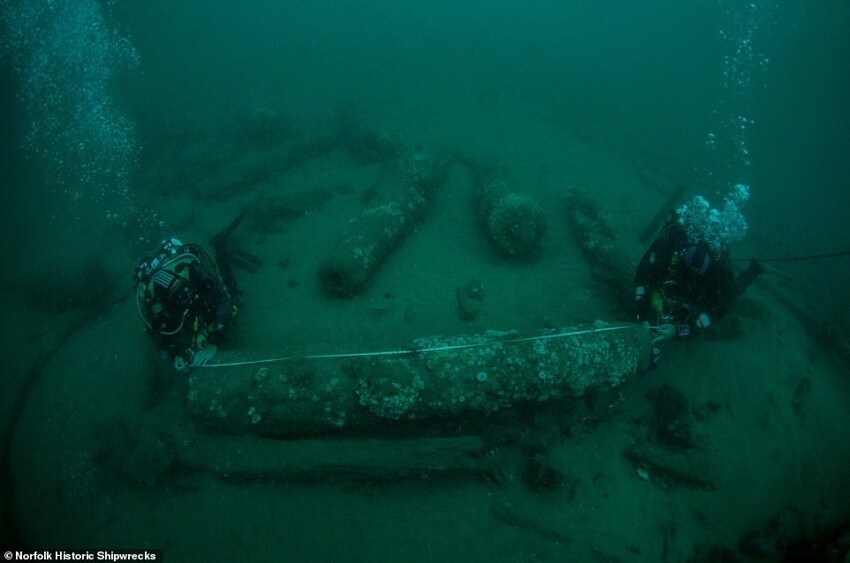
The fact that the Gloucester was covered in sand and bottom sediments, helped save the sunken ship. Some artifacts, in turn, are well preserved due to anaerobic underwater conditions. Representatives of state agencies say that there are currently no plans to deliver any of the remains to land. Nearly 7,000 photographs taken by the Foundation for Marine Archeology, made it possible to create a three-dimensional image of the crash site.
“Great depth and poor visibility create difficult conditions for studying the ship,” says Harry Momber, director of the Foundation maritime archeology. - However, every minute spent underwater in such a historically important place, was priceless. We have made almost 7000 photographs during a diving mission in 2022 to capture sunken ship in great detail and create a 3D model. Now the public can see the lost ship on the seabed and get understanding of its archaeological potential. In addition, we also we can see how the sand covers various parts of the ship.”
The sinking of the Gloucester is a fateful moment in the British political history, as it almost caused death Catholic heir to the Protestant throne at the time of the great political and religious tensions. James Stewart, later James II The English who will be the last Catholic king UK, survived the wreck, but about 250 sailors and passengers died, mainly because of the future monarch. James procrastinated leaving the ship until the last minute, which cost people their lives, who, due to protocol, could not leave the ship in front of the royal family. The future king, however, denied any responsibility for loss of life, instead blaming the ship's captain, James Ayres, who was imprisoned. 
One of the witnesses to the disaster was Samuel Pepys, who was on another British ship and wrote a heartbreaking account of the casualties and survivors who were raised from the water "half-dead". 
A leather wallet with a crown symbol found at the crash site. 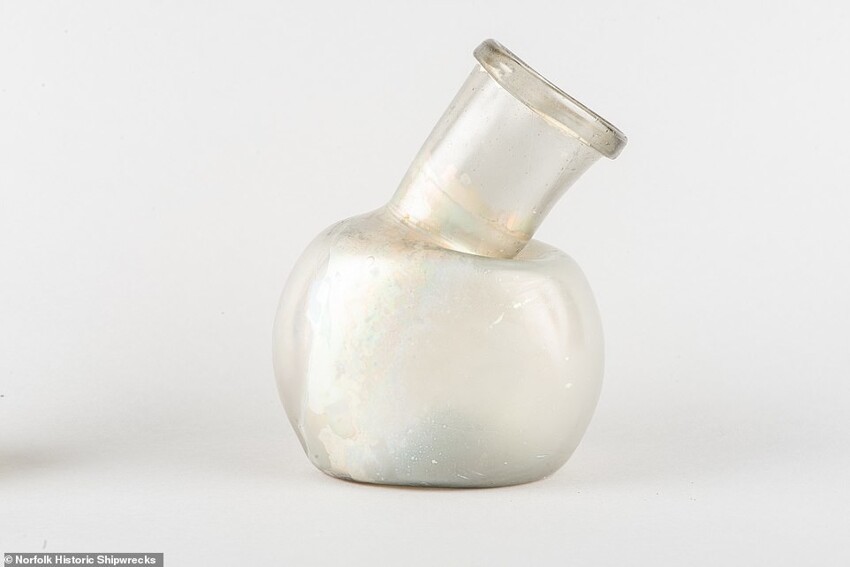
A glass urinal from the Gloucester. 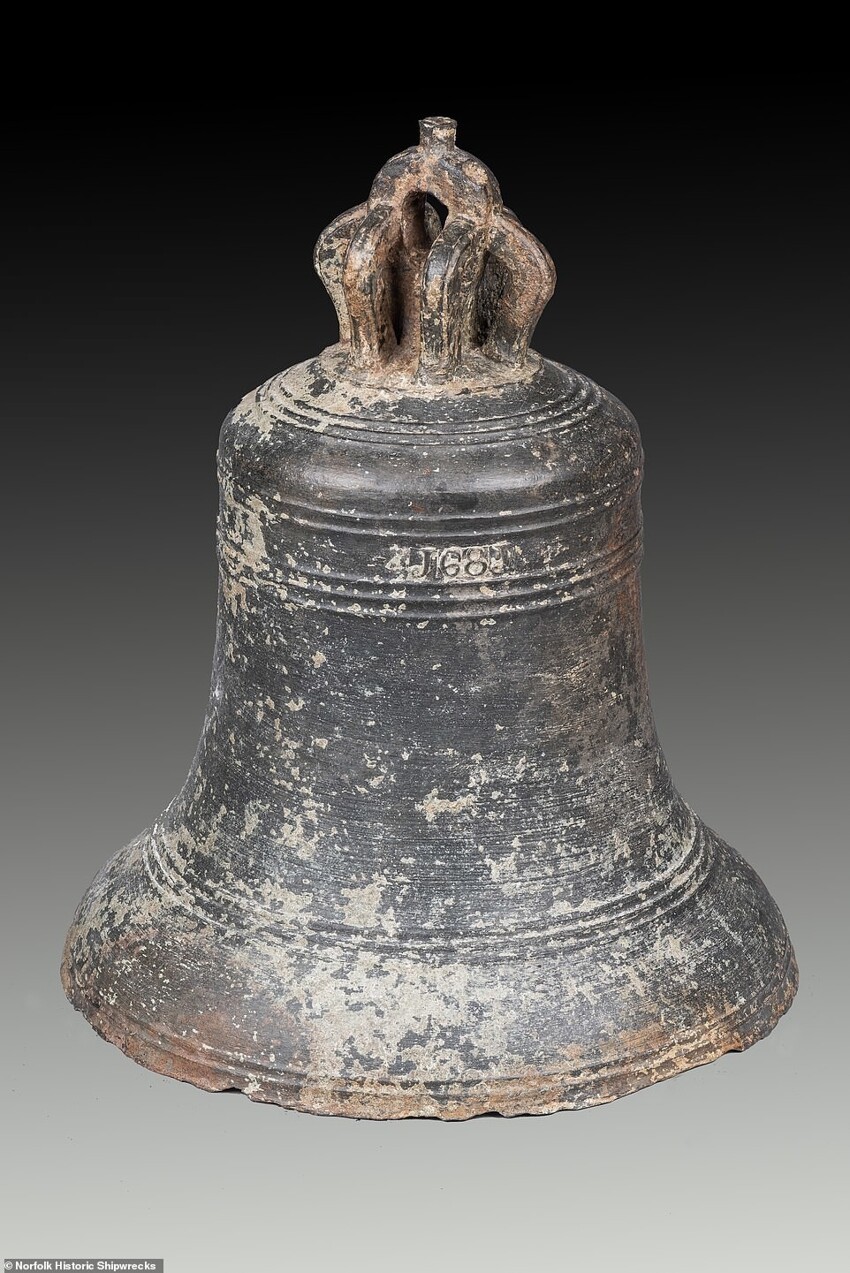
In 2012, one of the finds was a ship's bell, made in 1681 - was used by the Ministry of Defense for final confirmation: the sunken ship is indeed "Gloucester". 
A trumpet mouthpiece detached from the rest of the instrument. Before appearance of loudspeakers and two-way radios speaking mini-pipes served to amplify the voice. 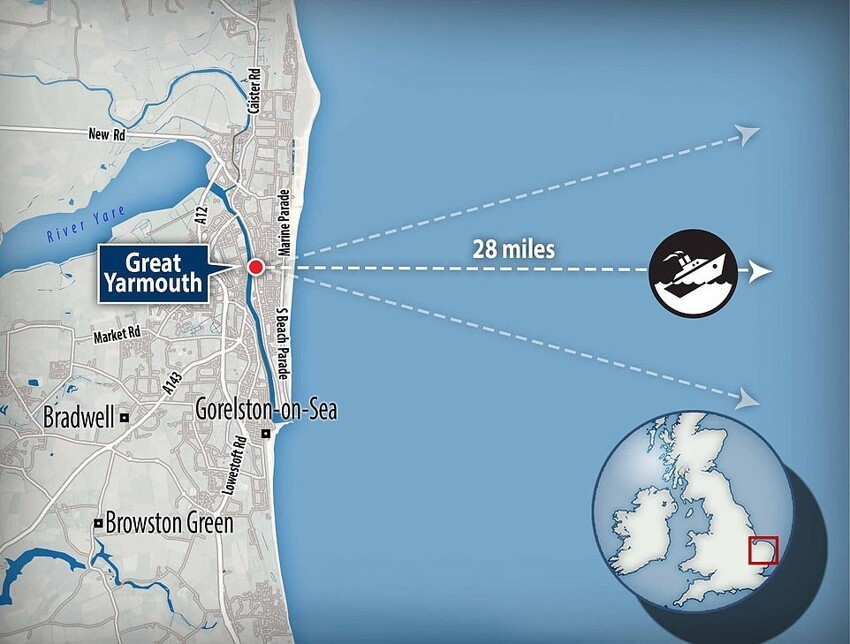
54-gun frigate sunk on May 6, 1682 on sandy shallows of Norfolk, was discovered 40 kilometers from the coast Great Yarmouth. The exact location of the wreckage has not been made public. 
The brothers led the search for the wreck of the Gloucester for several years. Julian and Lincoln Barnwell. They were also handled by their late father Michael Barnwell and two friends, including James Little, a former submariner and British Royal Navy diver. 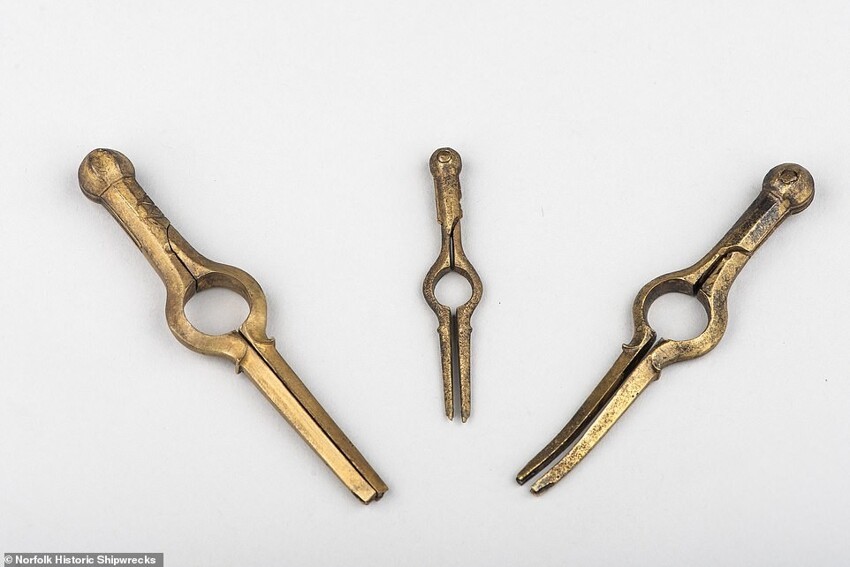
The brothers decided to start searching for the ship after reading about it in 2003. year, but after four fruitless years, they almost lost hope. However their efforts were crowned with success in June 2007. During the four-year search they explored an area of 5,000 nautical miles. Brothers, however, no one was told about the find for 15 years in order to keep it from treasure hunters, since the wreck is in international waters.
“We are delighted to be able to share footage from the location crash and salvaged artifacts with the public, - told reporters Lincoln. - On the video you can see in what bad condition it is sunken ship: it shows fishing nets and artifacts right on seabed surface. There is an urgent need to protect The Gloucester and Related Artifacts.
Professor Claire Jowitt, maritime history expert from University of East Anglia, called the discovery of "Gloucester" the most an important maritime discovery since the Mary Rose, Henry's warship VIII. The Mary Rose was sunk in action on the Solent in 1545. raised in 1982 and later put on public display in Portsmouth. 
“Until now, only a handful of people have been able to see how looks like a sunken Gloucester,” Professor Jowitt said. - New frames along with artifacts and research materials will help highlight the importance of British maritime heritage to our history." 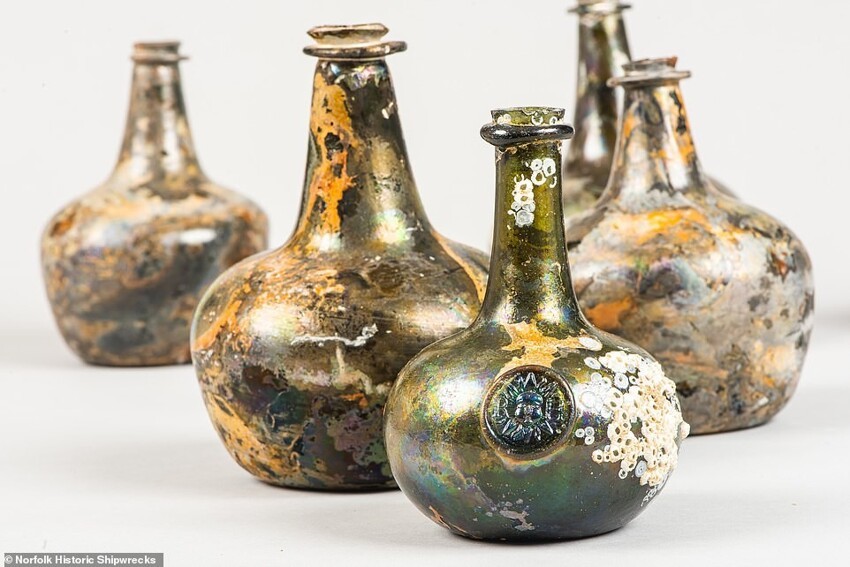
Bottles from Gloucester are 300 years old. 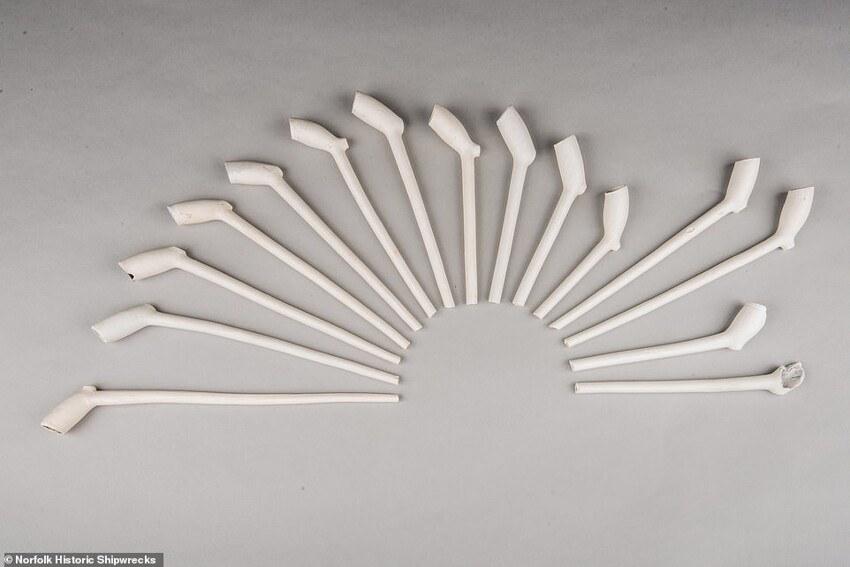
Surprisingly well-preserved smoking pipes from a sunken ship. 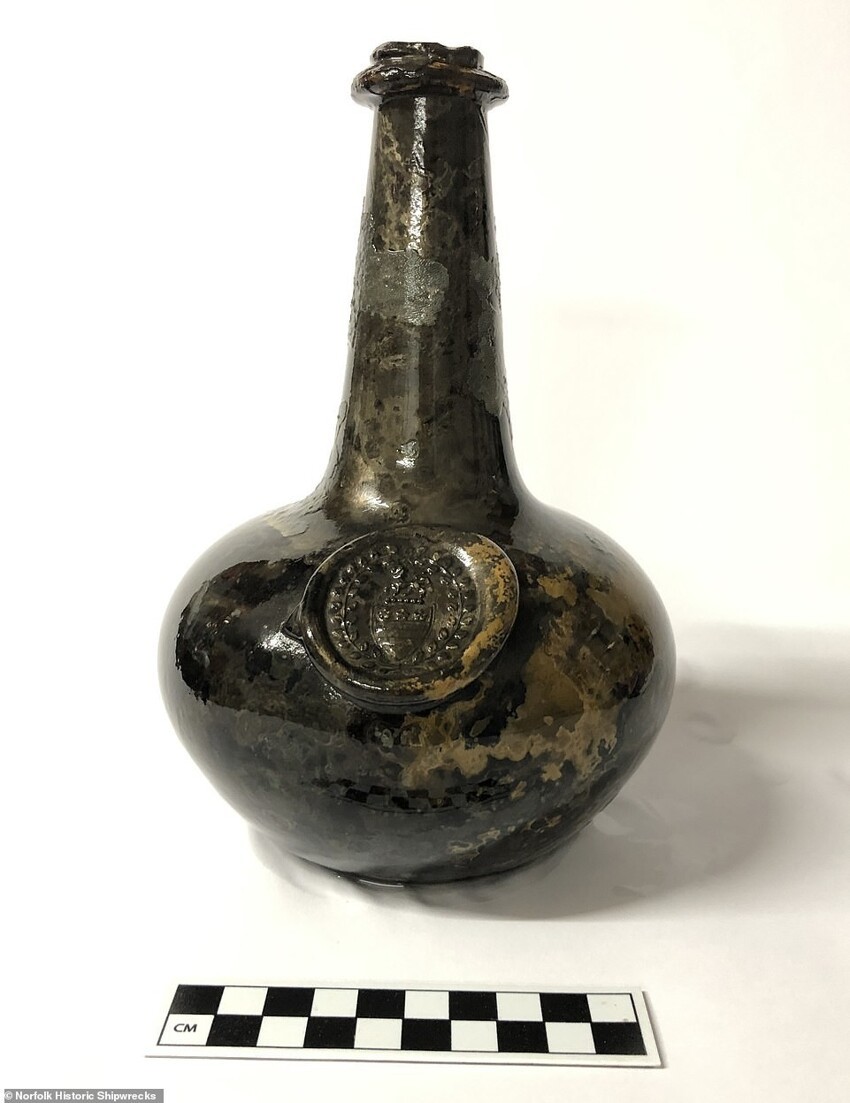
Exhibition "The Last Voyage of the Gloucester": the wreck King's Ship at Norfolk in 1682" will open the other day in Norwich Castle Museum. It was created by the Norfolk Museum Service in collaboration with the National Museum of the Royal Navy. Exhibition talks about the last voyage of the ship and the painstaking work on search, preservation and research of its artifacts, including wine bottles, glasses, clay pipes, navigational instruments, textiles and ship's bell.
“We are confident that everyone who visits the exhibition is better will understand the events of May 6, 1682, and not only their historical and political consequences, but also their impact on the people involved in tragedy,” Julian said.
The researchers also want to shed more light on the identities of the victims.
“It was a tragedy of considerable proportions in terms of deaths of people from different classes, - says Professor Jowitt. - Complete the history of the last voyage of the Gloucester and its consequences needs analysis, in assessing its cultural and political significance. We also we will try to establish a complete list of the dead and tell their stories, as the identities of only a fraction of the victims are currently known.”












